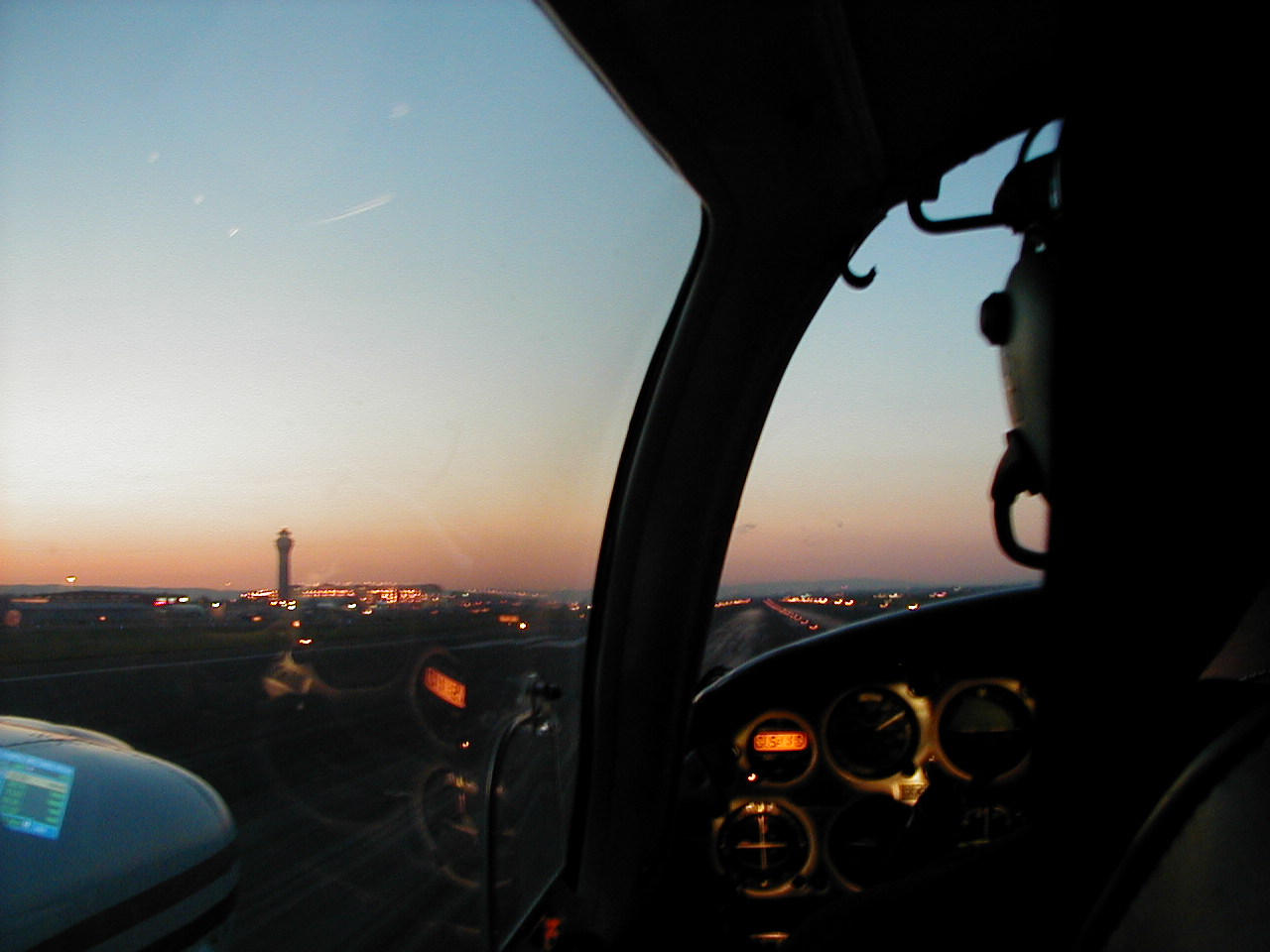
NIGHT FLYING
Special Considerations for Night Flying
- Weather briefings prior to night flight are critical as weather systems or hazards cannot be seen. During en route phases, obtain updated weather information. Keep an eye out for “disappearing” horizons.1
- Charts should always be carefully used to insure sufficient en route ground clearance.2
- Airport approaches should always conform to the altitudes depicted in the Obstacle Clearance Circle found in the Canada Flight Supplement.
- Pre-takeoff taxiing should always include rolling instrument check.3
- Anti-collision lights should not be used during taxiing, but should be turned on when crossing or entering a runway.
- Always conduct flight operations using the checklists provided in the Pilot Operating Handbook.
- Departure procedures should always include a visual fuel leak check and engine instruments check.
- Always ensure a minimum of 500’ AGL when turning on to final approach, and never make low approaches to landings. It must be assumed that obstacles below the glide path cannot be seen during an approach.
- Taxi carefully. It is crucial, especially when taxiing at night in an unfamiliar airport that you keep with precision to the yellow centrelines on taxiways. The point following the rollout after a landing is especially hazardous, when attempts to locate the taxiway exits from a runway are difficult. Note that the taxiway entrances are projected on to the runway surface, where a yellow line will guide you to the taxiway entrance.4
- Always be prepared to execute a 180° turn on instruments.
- Risk for carburettor ice is greater at night and should be carefully monitored.
- In precipitation, be conscious of airframe icing; monitor ambient temperature and regularly inspect the airframe.
- In addition to the aircraft equipment required for Day VFR flight, Canadian Aviation Regulation 605.16 requires that an aircraft conducting Night VFR be equipped with the following:
- a sensitive altimeter adjustable for barometric pressure;
- a turn and slip indicator or turn co-ordinator (or a slip-skid indicator when equipped with a second standby attitude indicator capable of 360 degree attitude indications);
- adequate electrical energy generated for all electrical requirements;
- pilot access to all fuses installed on the aircraft, and spare fuses adequate for at least 50% of fuses installed);
- when operated beyond visual range of an aerodrome, a gyroscopic or stabilized magnetic direction indicator;
- a means of illuminating instruments;
- when carrying passengers, a landing light;
- position and anti-collision lights.
- To fly with passengers at night, the required five takeoffs and landings must have been flown at night within the preceding six months.
- When flying at night, the pilot must have access to a functioning timepiece and a functioning flashlight.
Further Readings:
Transport Canada's Night VFR Part I
Transport Canada's Night VFR Part II
Understanding Night VFR and the CFIT Risk
1 Horizon reference is largely provided by land lighting; in the event of deteriorating weather, land lighting becomes obscured or disappears entirely, often at such a slow rate that the deterioration goes unnoticed by the pilot—the key of course is to have a solid understanding of current vicinity weather.
2 The Canadian Aviation Regulation require that aircraft operating at night be equipped with all necessary charts and publications for the route flown (including any probable diversionary route), and that the charts and publications must be current (Canadian Aviation Regulation 602.60-62).
3 In addition to the aircraft instrumentation required for Day VFR, the required equipment for night flying consists of the following: a sensitive altimeter adjustable for barometric pressure; a turn and slip indicator or turn co-ordinator (or a slip-skid indicator when equipped with a second standby attitude indicator capable of 360 degree attitude indications); adequate electrical energy generated for all electrical requirements; pilot access to all fuses installed on the aircraft, and spare fuses adequate for at least 50% of fuses installed); when operated beyond visual range of an aerodrome, a gyroscopic or stabilized magnetic direction indicator; a means of illuminating instruments; when carrying passengers, a landing light; position and anti-collision lights (Canadian Aviation Regulation 605.16).
4 If you cannot see the taxiway turnoff line, a taxiway does not exist, and you risk running off the runway surface and having a prop-strike (very expensive).

.jpg)


